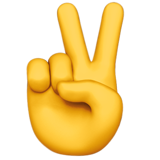The course is designed for anyone who wants to master the fundamentals of character design and create their own unique casual-style hero, all under the guidance of an experienced mentor.
During the course, you’ll learn the key principles of sketching, building a character’s design, working with color schemes and styles, and of course — rendering (because what would we do without it?).
And as a bonus, we’ve included a special module where you’ll learn how to design a cute, one-of-a-kind pet for your character!
During the course, you’ll learn the key principles of sketching, building a character’s design, working with color schemes and styles, and of course — rendering (because what would we do without it?).
And as a bonus, we’ve included a special module where you’ll learn how to design a cute, one-of-a-kind pet for your character!

WHAT DO I NEED TO TAKE THE COURSE?
To successfully complete the course, you’ll need:
- A computer or laptop
- A graphics tablet
Course Program
In the first week, before starting on character creation, we’ll cover the basics of anatomy and proportions. You’ll practice building simple figure models and placing them into dynamic poses using references.
The face is the most expressive part of a character. This week, we’ll dive into the anatomy of the head and face, drawing basic emotions, and understanding shape language — learning how to use it to design appealing characters. You’ll practice sketching faces and stylizing them into different forms.
A great character starts with a great concept! In week 3, we’ll teach you how to think through ideas, choose the right references, and convey volume and form. You’ll learn the hallmarks of casual-style characters and create sketches of both a hero and his cute pet.
Before moving on to rendering the final sketch, we’ll study the principles of light and shadow — essential knowledge for rendering any 2D object. You’ll practice black-and-white rendering of poses built from the primitives you learned in week one.
In the final week, we’ll focus on rendering your character and their pet. We’ll dive into the subtleties of casual rendering, how to choose the right color palette, and how to make shapes feel dimensional. You’ll learn to render clothing, hair, and add depth using light, occlusion, and drop shadows.
Course duration: 5 weeks
We care about your results and want you to finish the project yo started! That’s why you’ll have an additional month after the course ends to finalize your work and submit it to your mentor for review.

Made with love by Redby Art.

Join our social networks to follow the latest company news
© All Rights Reserved. redbyschool@mail.ru
Order

"Basics of Character"
Duration of training: 5 weeks
Course price:
280 $




